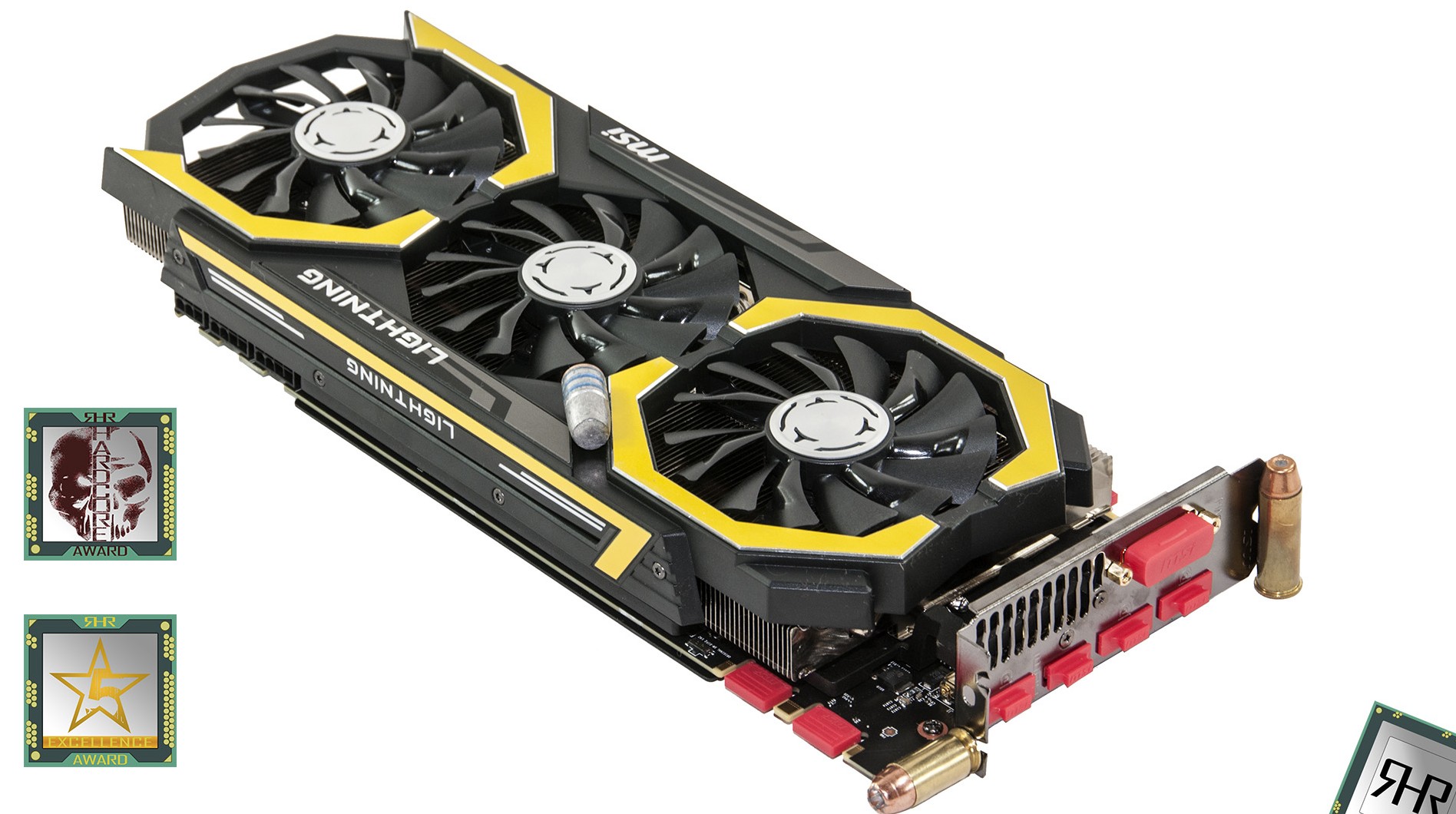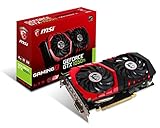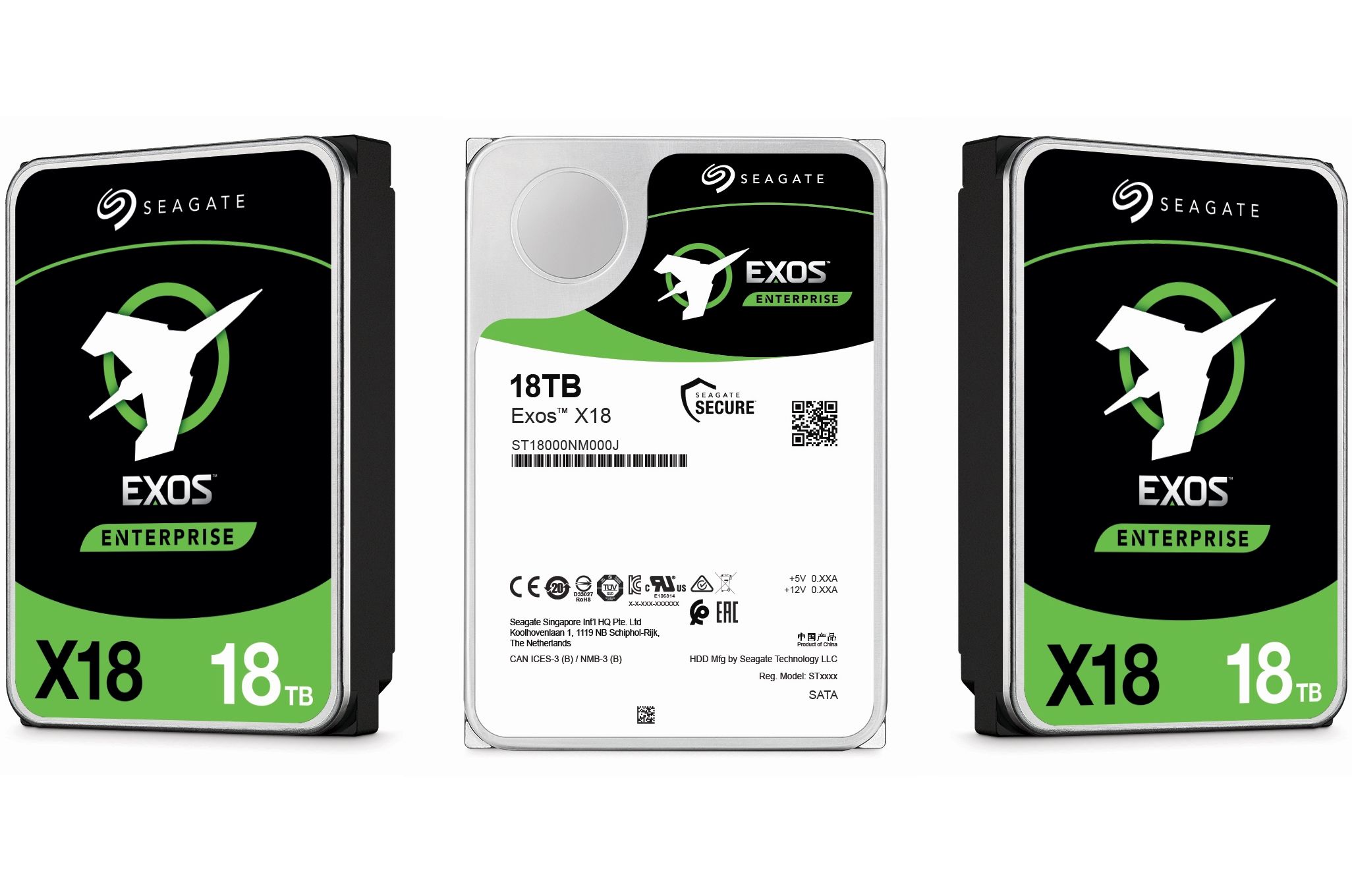 For the Lightning 980Ti MSI has gone all out and created a box that is nearly impossible to miss. This box is not only extremely bright and colorful but bloody massive to boot. This combination of bright aesthetics with over-sized dimension makes this shipping container rather distinctive and easily makes it stand out from the competition when on retail shelves. Of course, this massive size does make it more costly to ship, but as with everything in life this is the trade off consumers have to be willing to make. More to the point, if a few dollars extra in shipping fees matters that much to you this card is not right for you.
For the Lightning 980Ti MSI has gone all out and created a box that is nearly impossible to miss. This box is not only extremely bright and colorful but bloody massive to boot. This combination of bright aesthetics with over-sized dimension makes this shipping container rather distinctive and easily makes it stand out from the competition when on retail shelves. Of course, this massive size does make it more costly to ship, but as with everything in life this is the trade off consumers have to be willing to make. More to the point, if a few dollars extra in shipping fees matters that much to you this card is not right for you. By removing the shipping sleeve / external shipping container we can see that the internal box consists of two parts, the top two thirds is where the Lightning itself resides, cocooned in enough foam to make it all but impervious to even the angriest postmen’s tantrum. To access the card itself the top third hinges up and out of the way to show the card in an electro static bag.
By removing the shipping sleeve / external shipping container we can see that the internal box consists of two parts, the top two thirds is where the Lightning itself resides, cocooned in enough foam to make it all but impervious to even the angriest postmen’s tantrum. To access the card itself the top third hinges up and out of the way to show the card in an electro static bag. The bottom third is actually a drawer where the accessories reside inside another smaller box. The list of accessories is also rather extreme and downright stellar. In grand total you will get a manual, driver dvd, extra-long SLI ribbon bridge connector, 6pin to 8pin adapter, three sets of voltmeter adapters, certificate of stability, and best of all an extra metal bracket for LN2 users. That is what we call an accessory list.
The bottom third is actually a drawer where the accessories reside inside another smaller box. The list of accessories is also rather extreme and downright stellar. In grand total you will get a manual, driver dvd, extra-long SLI ribbon bridge connector, 6pin to 8pin adapter, three sets of voltmeter adapters, certificate of stability, and best of all an extra metal bracket for LN2 users. That is what we call an accessory list. Even on just a quick glance you can tell that this is not your typical 980TI, nor is it your typical MSI 980Ti either. Instead this card is bigger, bolder and simply screams ‘overclocking and PC gaming enthusiast’ – with a King Kong chest pound thrown in for good measure. That in and of itself is telling as MSI are not ones to take the typical route and have produced extremely good, factory overclocked 980TI’s in the past, and yet this card simply dwarfs them in both the aesthetics and sheer size department.
Even on just a quick glance you can tell that this is not your typical 980TI, nor is it your typical MSI 980Ti either. Instead this card is bigger, bolder and simply screams ‘overclocking and PC gaming enthusiast’ – with a King Kong chest pound thrown in for good measure. That in and of itself is telling as MSI are not ones to take the typical route and have produced extremely good, factory overclocked 980TI’s in the past, and yet this card simply dwarfs them in both the aesthetics and sheer size department.
Now with that being said the yellow and black color scheme will either ‘work’ for you, or your will find it a touch off putting. The same can be said of the Gaming series’ red & black looks. Interestingly enough while we found the Gaming 980Ti a touch too aggressive, the styling of this card simply works for us. Maybe it’s because we personally prefer yellow to red, maybe it is because the yellow spells ‘OC’ and gave us a chuckle when we first realized that….or maybe it’s just because this card reminds us of the old Chevy Camaro muscle cars from our youth. In either case we have absolutely nothing bad to say about the looks of this card. You may feel differently. In either case, consumers do not purchase a Lightning for its looks, and rather for its performance. In order to satisfy consumers need for speed, MSI has created an entirely new custom heatsink and fan combination that is as impressive as it is large (to be precise this card weighs a whopping 1365grams and is 330mm long x 140mm wide x 53mm high). First and foremost is this card is a 3 slot design. This certainly allows the heatsink to be bigger, but it means this card will simply not fit on all motherboards. However, most gaming orientated motherboards come with three spaces between their primary and secondary PCIe x16 slots so this should not be overly concerning. Just be aware of it before purchasing this model. To be fair this card is more of a 2.5 – 2.75 slot design than a three slot design. This has been done so that if you do use two of them the top most will not be starved for air, and instead will be able to suck in as much air as needed between the gap.
In either case, consumers do not purchase a Lightning for its looks, and rather for its performance. In order to satisfy consumers need for speed, MSI has created an entirely new custom heatsink and fan combination that is as impressive as it is large (to be precise this card weighs a whopping 1365grams and is 330mm long x 140mm wide x 53mm high). First and foremost is this card is a 3 slot design. This certainly allows the heatsink to be bigger, but it means this card will simply not fit on all motherboards. However, most gaming orientated motherboards come with three spaces between their primary and secondary PCIe x16 slots so this should not be overly concerning. Just be aware of it before purchasing this model. To be fair this card is more of a 2.5 – 2.75 slot design than a three slot design. This has been done so that if you do use two of them the top most will not be starved for air, and instead will be able to suck in as much air as needed between the gap. Equally noteworthy is the fact that this card is not only taller and longer than most it is also wider. Just like the MSI Gaming series, this card’s heatsink ‘overhangs’ the PCB and as such if you try sticking this monster in a smaller case you are going to have to break out the sawzall. Of course trying to stick this card inside a smaller case would be surreal to say the least. More importantly as long as your case has a side panel fan there should be plenty of room to put the side panel back on your case with first cutting holes in the side panel.
Equally noteworthy is the fact that this card is not only taller and longer than most it is also wider. Just like the MSI Gaming series, this card’s heatsink ‘overhangs’ the PCB and as such if you try sticking this monster in a smaller case you are going to have to break out the sawzall. Of course trying to stick this card inside a smaller case would be surreal to say the least. More importantly as long as your case has a side panel fan there should be plenty of room to put the side panel back on your case with first cutting holes in the side panel. On the positive side, MSI has not wasted a millimeter of these increased dimensions and instead uses it all for a heatsink that is insanely capable. MSI rates this heatsink for a whopping 700 watts of heat dissipation and honestly we believe them. Even when further overclocked this TriFrozr design simply laughed at the heat output from the core and was damn near silent while under load. Basically at its factory settings the core ran only in the high 60s and the card was whisper quiet. Better still is when idle the fans stop running and the Lightning runs in passive mode – just like the Gaming series.
On the positive side, MSI has not wasted a millimeter of these increased dimensions and instead uses it all for a heatsink that is insanely capable. MSI rates this heatsink for a whopping 700 watts of heat dissipation and honestly we believe them. Even when further overclocked this TriFrozr design simply laughed at the heat output from the core and was damn near silent while under load. Basically at its factory settings the core ran only in the high 60s and the card was whisper quiet. Better still is when idle the fans stop running and the Lightning runs in passive mode – just like the Gaming series. Better still is this card can do all this not because it is a reference speed Maxwell core that runs cool, instead it is one of the highest factory overclocked cards you can buy today. Specifically a reference 980TI runs at a maximum ‘boost’ speed of 1,075Mhz on the core and 7010 (effective) on the memory. MSI’s Gaming series boosted that to 1279 and 7096 memory, and then the Lightning comes along and twists the dial all the way to eleven with a boost clock setting of 1304Mhz (21.3 percent over reference!) on the core, and the RAM set to 7,096Mhz. That is not a cool running design and yet the TriFrozr easily handles this heat load. Damn that is impressive.
Better still is this card can do all this not because it is a reference speed Maxwell core that runs cool, instead it is one of the highest factory overclocked cards you can buy today. Specifically a reference 980TI runs at a maximum ‘boost’ speed of 1,075Mhz on the core and 7010 (effective) on the memory. MSI’s Gaming series boosted that to 1279 and 7096 memory, and then the Lightning comes along and twists the dial all the way to eleven with a boost clock setting of 1304Mhz (21.3 percent over reference!) on the core, and the RAM set to 7,096Mhz. That is not a cool running design and yet the TriFrozr easily handles this heat load. Damn that is impressive. In order to do all this the heatsink makes use of more aluminum than a beer keg, and has three 8mm heatpipes and two 6mm heatpipes. To ensure that the heat which is transferred from the core to the heatsink is then efficiently whisked away MSI has gone with three 90mm fans – thus the ‘Tri’ in TriFrozr. While each of these fans are individually smaller than the Gaming series fans the fact there is three of them makes up for in quality that may be lost in quality. In testing all three fans were whisper quiet while not individually controlled (they are configured in a two zone (2 + 1) setup with each zone being controlled separately from the other) as on the Gaming series proved to be even more effective.
In order to do all this the heatsink makes use of more aluminum than a beer keg, and has three 8mm heatpipes and two 6mm heatpipes. To ensure that the heat which is transferred from the core to the heatsink is then efficiently whisked away MSI has gone with three 90mm fans – thus the ‘Tri’ in TriFrozr. While each of these fans are individually smaller than the Gaming series fans the fact there is three of them makes up for in quality that may be lost in quality. In testing all three fans were whisper quiet while not individually controlled (they are configured in a two zone (2 + 1) setup with each zone being controlled separately from the other) as on the Gaming series proved to be even more effective. To ensure that this massive heatsink does not cause any bending to occur MSI has given the Lightning 980Ti a full length backplate replete with a fighter jet being hit with lightning bolts. This is a nice touch that has the added benefit of giving this card a rather striking look.
To ensure that this massive heatsink does not cause any bending to occur MSI has given the Lightning 980Ti a full length backplate replete with a fighter jet being hit with lightning bolts. This is a nice touch that has the added benefit of giving this card a rather striking look. However, beyond physically reinforcing the card and helping the aesthetics this backplate also serves a crucial role in protecting some of the power delivery components from damage. We dislike seeing so many components residing on the back of the PCB but given the large and robust nature of this cards power delivery system we understand why the engineers had to do it – as they ran out of room on the topside!
However, beyond physically reinforcing the card and helping the aesthetics this backplate also serves a crucial role in protecting some of the power delivery components from damage. We dislike seeing so many components residing on the back of the PCB but given the large and robust nature of this cards power delivery system we understand why the engineers had to do it – as they ran out of room on the topside! By removing more screws than we care to count and gently removing that massive heatsink we can see that MSI has once again gone above & beyond by including a secondary heatsink for the RAM and other critical components. However unlike other secondary heatsinks that MSI has used on their Gaming series, this one not only weighs a heck of a lot more, it also has more cooling surface. This is because it not only has cooling fins built into it, but the entire outer perimeter has been raised. This means that waste air from the three fans will come into contact with this heatsink much longer than otherwise and transfer more heat to it. Basically air will be pushed down on to it, but before escaping out the sides has to roll up and then over the edge. This points towards big things on the RAM overclocking side of the equation. This goes double when the fact that MSI only uses the absolute highest binned GDDR5 RAM ICs to make it on to their Lightning.
By removing more screws than we care to count and gently removing that massive heatsink we can see that MSI has once again gone above & beyond by including a secondary heatsink for the RAM and other critical components. However unlike other secondary heatsinks that MSI has used on their Gaming series, this one not only weighs a heck of a lot more, it also has more cooling surface. This is because it not only has cooling fins built into it, but the entire outer perimeter has been raised. This means that waste air from the three fans will come into contact with this heatsink much longer than otherwise and transfer more heat to it. Basically air will be pushed down on to it, but before escaping out the sides has to roll up and then over the edge. This points towards big things on the RAM overclocking side of the equation. This goes double when the fact that MSI only uses the absolute highest binned GDDR5 RAM ICs to make it on to their Lightning. When we removed that secondary heatsink and took a good look at the power delivery system we must admit to being impressed. This Lightning uses a 12 + 3 design that relies upon two separate all digital VRM controllers. One is dedicated to the core and the other is for the memory and PLL. Equally important is all the power components consist of MSI’ Miltary Grade 4 parts. This means 60 amp DRMOS mosfets, Hi-C and Dark Caps, and Super Ferrite Chokes.
When we removed that secondary heatsink and took a good look at the power delivery system we must admit to being impressed. This Lightning uses a 12 + 3 design that relies upon two separate all digital VRM controllers. One is dedicated to the core and the other is for the memory and PLL. Equally important is all the power components consist of MSI’ Miltary Grade 4 parts. This means 60 amp DRMOS mosfets, Hi-C and Dark Caps, and Super Ferrite Chokes. Interestingly enough the core VRM design appears to be a 8 real phase design with 4 additional ‘virtual’ phases added on. This will help spread the load out and not only keep individual component temperatures lower but also allow for increase stability in voltages being sent to the core. As with the RAM, MSI has worked closely with NVIDIA to ensure that only ‘golden’ chips make the grade. This too points towards big things on the core overclocking side of the equation.
Interestingly enough the core VRM design appears to be a 8 real phase design with 4 additional ‘virtual’ phases added on. This will help spread the load out and not only keep individual component temperatures lower but also allow for increase stability in voltages being sent to the core. As with the RAM, MSI has worked closely with NVIDIA to ensure that only ‘golden’ chips make the grade. This too points towards big things on the core overclocking side of the equation. To ensure that the RAM and Core VRM controllers get enough power to feed this hungry beast MSI has gone with two 8-pin PCIe ports and a third 6-pin port. With the PCIe slots 75 watts taken into consideration this means this card can – theoretically – draw up to 450 watts of power. That pretty much is the definition of overkill for a 250 watt TDP card! However, it certainly will not be wasted for elite enthusiasts looking to break world records. For consumers interested in such things MSI also included voltage read points that allow you to easily confirm in real-time what the actual voltages being sent to the various components are. Not everyone will want to double check the software readings, but those that do will like the fact that don’t have to solder in read points first.
To ensure that the RAM and Core VRM controllers get enough power to feed this hungry beast MSI has gone with two 8-pin PCIe ports and a third 6-pin port. With the PCIe slots 75 watts taken into consideration this means this card can – theoretically – draw up to 450 watts of power. That pretty much is the definition of overkill for a 250 watt TDP card! However, it certainly will not be wasted for elite enthusiasts looking to break world records. For consumers interested in such things MSI also included voltage read points that allow you to easily confirm in real-time what the actual voltages being sent to the various components are. Not everyone will want to double check the software readings, but those that do will like the fact that don’t have to solder in read points first. Also of note is that this card comes with a LN2 switch which allows for more sub-zero overclocking abilities. Though most consumers will find this switch to not be needed as MSI has been forced by NVIIDIA to abide NVIDIA maximum voltage specifications. This is a shame as this heatsink and this power delivery system could easily handle even more voltage than NVIDIA will allow. Of course if you are such a like minded individual who is either handy with a soldering iron or a firmware modding software program you can ‘theoretically’ override these settings and push even more power. This will void your warranty and MSI will not be pleased with you…but it is your card and if you want to wring every drop of performance out of it…etc etc etc. We personally don’t recommend it as this cards performance when fully overclocked was jaw droppingly large. You may feel differently, but in either case this issue is NVIDIA’s fault and not MSI’s.
Also of note is that this card comes with a LN2 switch which allows for more sub-zero overclocking abilities. Though most consumers will find this switch to not be needed as MSI has been forced by NVIIDIA to abide NVIDIA maximum voltage specifications. This is a shame as this heatsink and this power delivery system could easily handle even more voltage than NVIDIA will allow. Of course if you are such a like minded individual who is either handy with a soldering iron or a firmware modding software program you can ‘theoretically’ override these settings and push even more power. This will void your warranty and MSI will not be pleased with you…but it is your card and if you want to wring every drop of performance out of it…etc etc etc. We personally don’t recommend it as this cards performance when fully overclocked was jaw droppingly large. You may feel differently, but in either case this issue is NVIDIA’s fault and not MSI’s. About the only thing on the MSI Lightning 980Ti that can be accused of being ‘reference’ is the output selection. On the bottom row you get to three full size DisplayPorts, and a single full size HDMI 2.0 port; while the top row is split nearly evenly between exhaust slits and a single DVI port. Overall it is a very nice selection that should satisfy most consumers’ needs nicely.
About the only thing on the MSI Lightning 980Ti that can be accused of being ‘reference’ is the output selection. On the bottom row you get to three full size DisplayPorts, and a single full size HDMI 2.0 port; while the top row is split nearly evenly between exhaust slits and a single DVI port. Overall it is a very nice selection that should satisfy most consumers’ needs nicely.










